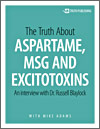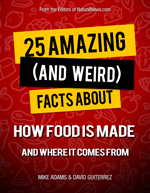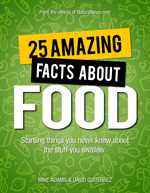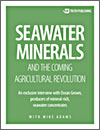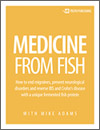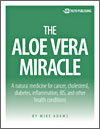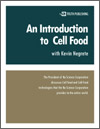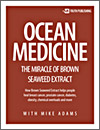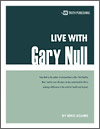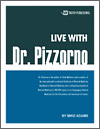|
||||||
Mezcla todos los ingredientes y refrigéralos por 10 minutos.
Rocia con aceite en aerosol una sartén grande anti-adherente y caliéntala a fuego medio Con un cucharón para servir helados, comienza a formar bolitas con 1/3 taza de mezcla y ponlas en la sartén. Aplasta las bolitas con el reverso de una espátula para tortillas y cocínalas por 6 minutos, o hasta que estén doradas por ambos lados, volteándolas con cuidado después de 3 minutos. Repite esto con el resto de la mezcla de atún y sirve. |
|
||||||
Calienta el horno a 400ºF.
Corta una abertura en uno de los lados largos de cada pechuga de pollo, teniendo cuidado de no cortar a través del lado opuesto. Rellena cada abertura con 2 hojas de albahaca, 1 rebanada de queso y 1 tomate secado al sol. Pon el pollo en un lado de una charola (bandeja) rociado con aceite en aerosol y añade los tomates uva al otro lado de la bandeja para hornear. Unta sobre los pollos 1 cucharada de vinagreta balsámica y hornea por 30 minutos, o hasta que quede cocido (alcance una temperatura interna de 165ºF). Rebana en tiras finas las hojas de albahaca restantes y ponlas encima de los tomates con el aderezo restante. Mezcla todo ligeramente. Sirve el pollo con la mezcla de tomate encima y listo. |
|
||||||
Unta el pan por dentro con la mayonesa y usa los demás ingredientes como relleno.
|
|
||||||
Espolvorea la levadura en el agua tibia con el azúcar en un tazón grande
y revuelve hasta que la levadura se disuelva. Déjala reposar durante 5
minutos.
Mezcla la harina, el aceite y la sal. Añade esto a la mezcla de levadura y revuelve hasta formar una masa blanda. Amásala sobre una superficie ligeramente enharinada por 5 minutos, o hasta que esté suave y elástica. Forma una bola con ella y aplástala un poco. Ponla sobre una bandeja para hornear rociada con aceite en aerosol, tápala con envoltura plástica y deja que suba en un lugar templado por 20 minutos. Mientras, calienta la carne en un tazón para microondas durante 2 minutos, o hasta que esté cocida. Escurre la carne. Separa la carne en trocitos pequeños con una cuchara y añádele la salsa. Mezcla bien. Calienta el horno a 425°F. Divide la masa en 4 trozos. Estira cada trozo hasta formar discos de 7 pulgadas y ponlos sobre una bandeja para hornear. Cubre los trozos con la mezcla de carne y el queso mozzarella y hornea de 18 a 20 minutos, o hasta que el queso se derrita y la corteza se dore. Agrega encima de los trozos el queso parmesano ¡y a comer! |
|
||||||
Cocina las cebollas en una sartén antiadherente grande a fuego medio 10
minutos, o hasta caramelizarlas. Retíralas de la sartén y tápalas para
mantenerlas calientes.
Agrega la carne a la sartén en tandas y cocínala de 2 a 3 minutos, o hasta que esté cocida, dándole vuelta de vez en cuando y agregando los chiles a la sartén con la última tanda de carne. Combina toda la carne, las cebollas y el cilantro en un tazón. Tapa para mantener la mezcla caliente. Mezcla la mayonesa y el ajo en polvo; úntasela a los bolillos por los lados del corte y cocínalos en la sartén 2 minutos por lado, o hasta que estén bien doraditas ambas caras. Ponles el relleno de mezcla de carne y el queso en rebanada ¡y a saborear! |
|
||||||
Machaca 3 rebanadas de aguacate en un tazón pequeño. Agrega 2 cucharadas de crema para cocinar, y mezcla bien. Calienta el aceite en una sartén antiadherente grande a fuego medio. Agrega las cebollas, los pimientos y cocínalos 2 minutos, revolviéndolos de vez en cuando. Agrega los tomates y cocínalos por 1 minuto. Retíralos de la sartén y tapa para mantenerlos calientes. Mientras, bate bien los huevos enteros con las claras de huevo y el resto de la crema para cocinar, viértelos en la sartén y cocínalos de 3 a 4 minutos, o hasta que casi cuajen, levantando los bordes con una espátula e inclinando la sartén de vez en cuando de vez en cuando para que lo que no se ha cocido se deslice por debajo. Cuando la mezcla de huevo cuaje pero todavía esté húmeda por arriba, ponle la mezcla de cebollas y 4 rebanadas de aguacate. Desliza la espátula por debajo de la omelette, inclina la sartén para aflojarla y, con cuidado, dobla la omelette por la mitad. Desliza o vuelca la omelette sobre el plato y córtala por la mitad. Corta la rebanada de aguacate restante por la mitad. Ponle a cada porción la salsa de aguacate, el perejil y 1 pedazo de aguacate. Buon Apetit! |
|
||||||
Pon el polvo para bebidas en un tazón mediano, viértele el jugo y revuélvelo hasta que se disuelva bien. Incorpora la compota.
Combina las manzanas: ponlas en 12 tacitas de papel o de plástico de 5 oz. y vierte en cada tacita 1/4 taza de la mezcla de jugo. Cúbrelas con papel aluminio. Inserta un palito de madera en el centro de cada una y congélalas por 4 horas, o hasta que estén firmes. Desecha el papel aluminio y saca las paletas de las tacitas justo antes de servir.
PUEDES PONER OTRA CUBIERTA COMO BOLSAS ZIP, evita el papel aluminium - por Idalia
|











